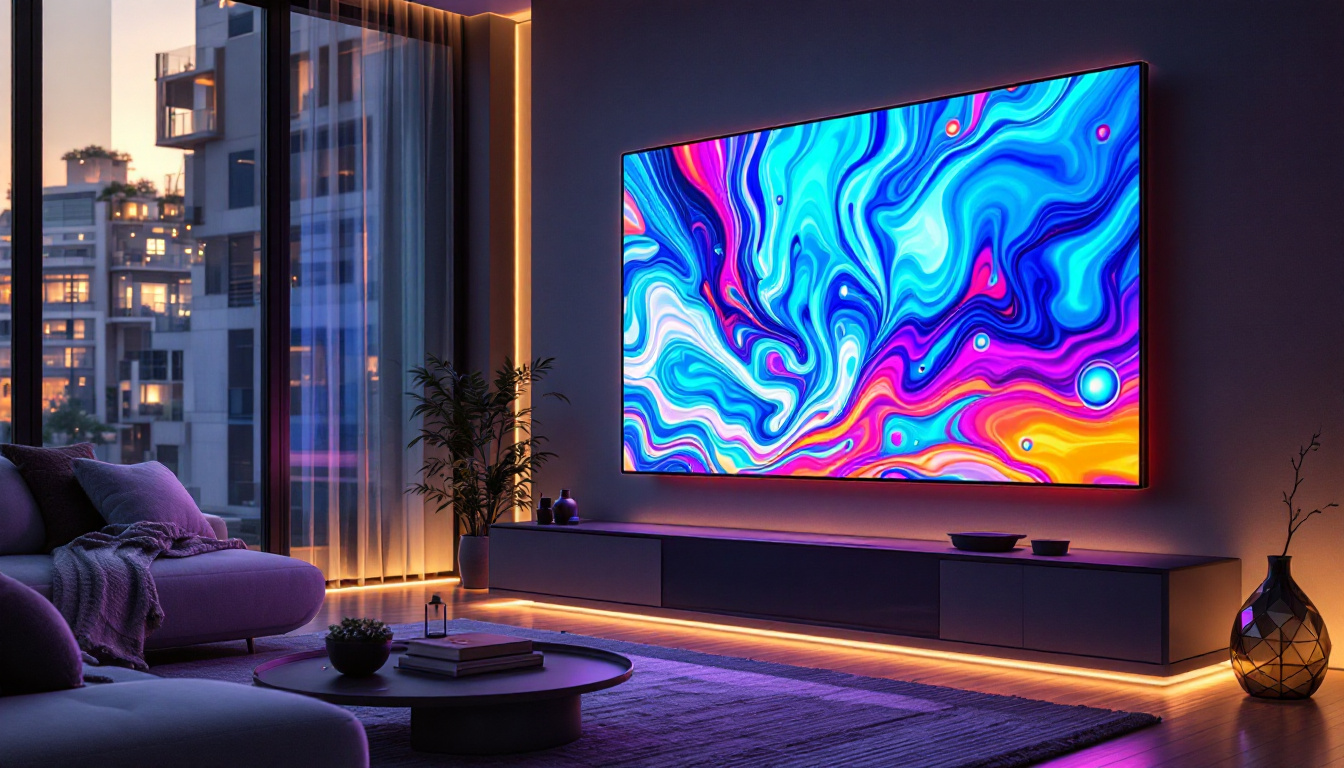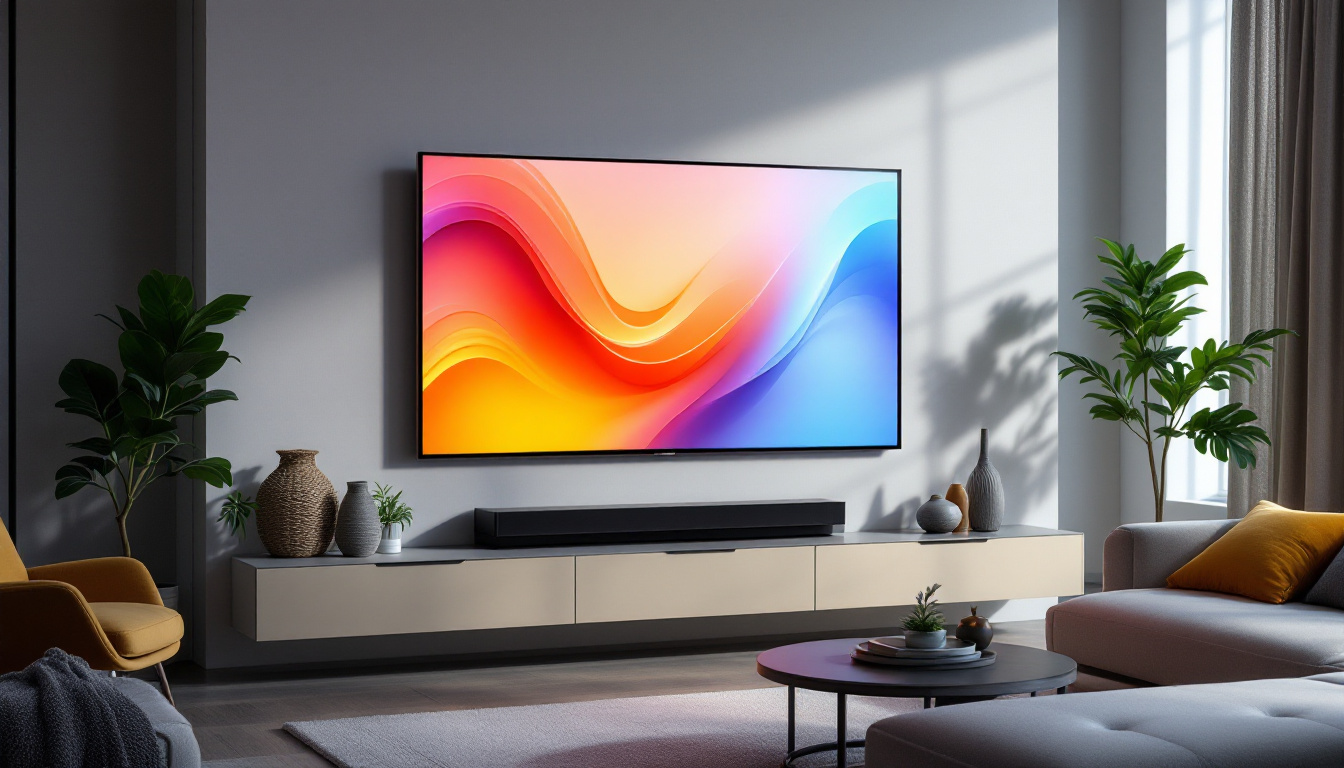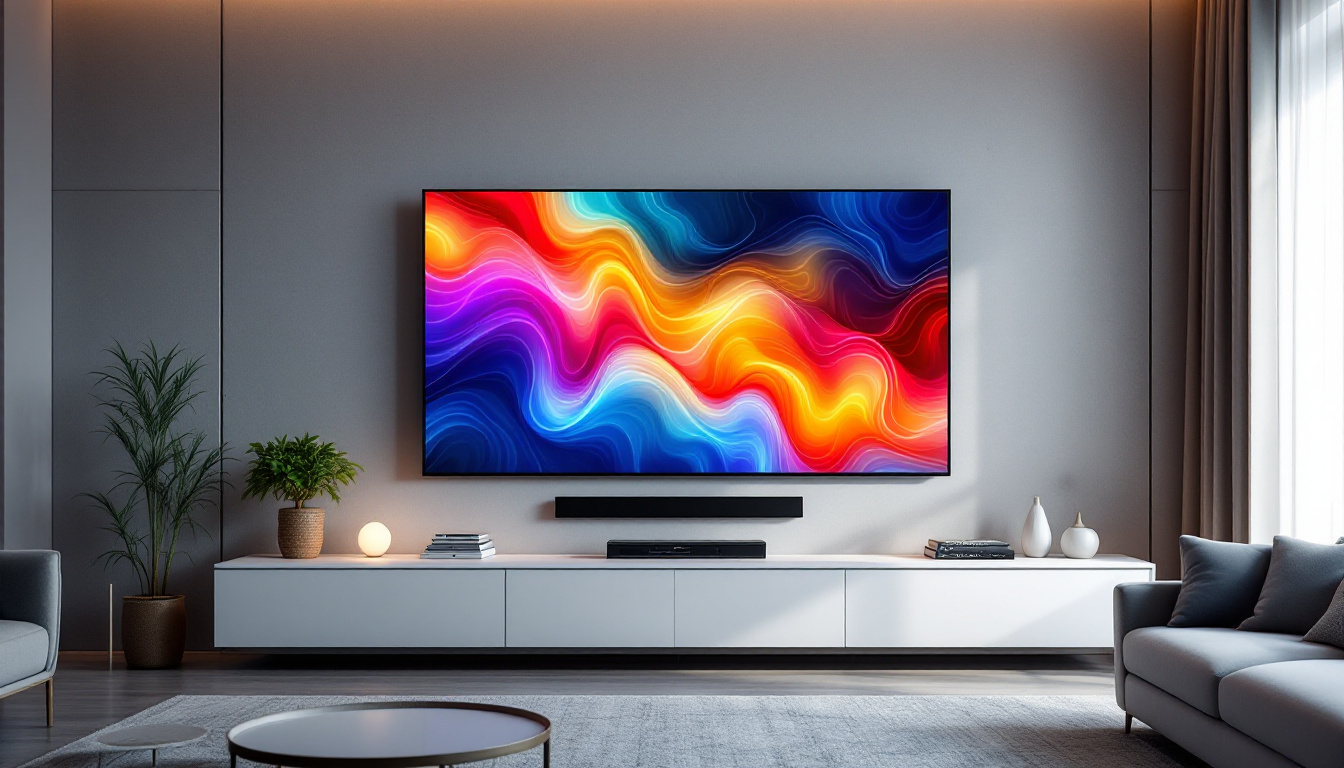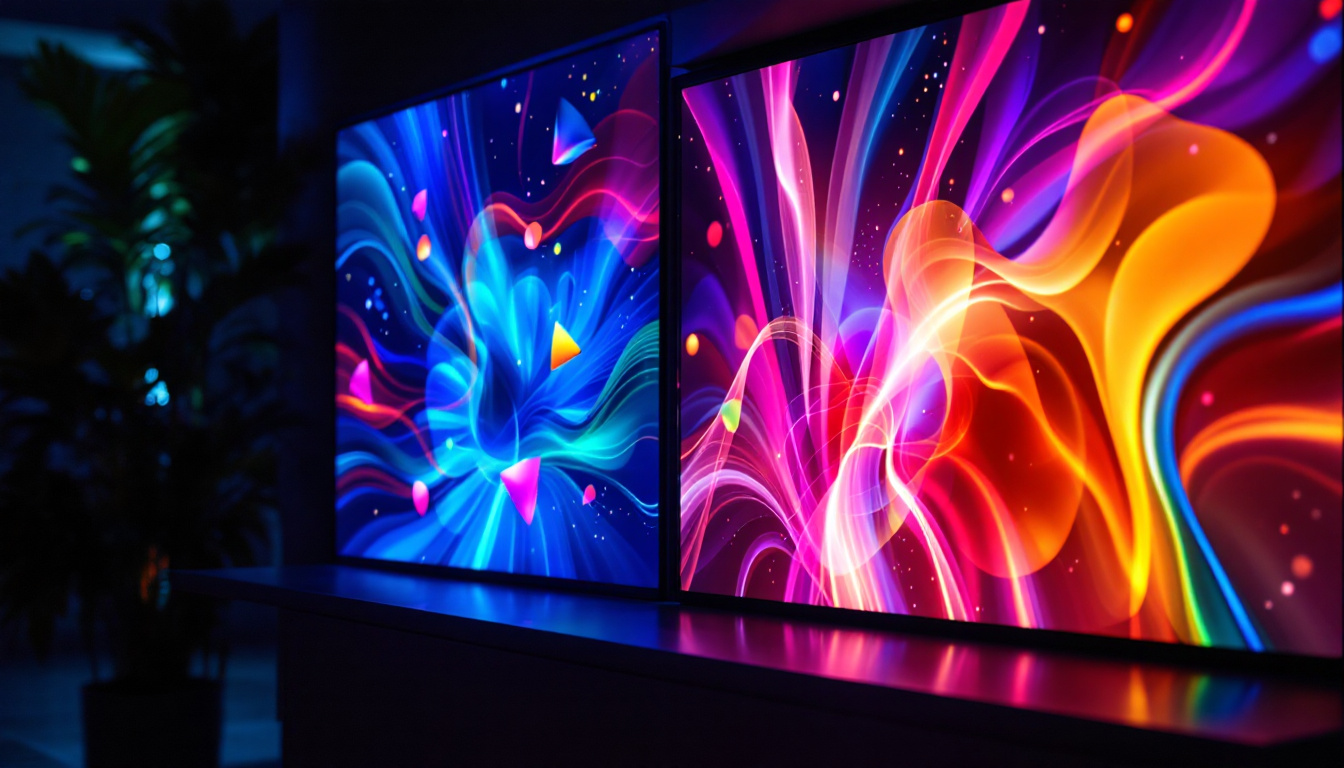The evolution of display technology has brought us to a point where understanding the differences between various types of displays is crucial. Among these, LCD (Liquid Crystal Display) and LED (Light Emitting Diode) technologies are two of the most prevalent. This article delves into the nuances of LCD and LED displays, particularly focusing on the numerical representations of 9 and 8, and how they relate to these technologies.
Understanding LCD Technology
Liquid Crystal Displays (LCDs) have been a staple in the display market for decades. They operate by using liquid crystals that modulate light. Unlike traditional cathode ray tube (CRT) displays, LCDs are lightweight, energy-efficient, and provide a sharper image quality. The evolution of LCD technology has allowed for a wide range of applications, from small handheld devices to large television screens, making them an integral part of modern life.
How LCDs Work
At the core of an LCD is a layer of liquid crystals sandwiched between two layers of glass. When an electric current passes through the liquid crystals, they align in a way that either allows light to pass through or blocks it. This manipulation of light creates the images we see on the screen. The precision with which the liquid crystals can be controlled contributes to the overall clarity and definition of the image, allowing for high-resolution displays that can render intricate details.
Additionally, LCDs require a backlight, as the liquid crystals do not emit light by themselves. This backlight is typically provided by fluorescent tubes or LEDs, which can significantly impact the display’s brightness and color accuracy. Recent advancements in backlighting technology, such as the introduction of edge-lit and full-array local dimming, have further enhanced the performance of LCDs, allowing for deeper blacks and more vibrant colors that are essential for an immersive viewing experience.
Types of LCD Displays
There are several types of LCD technologies, each with its advantages and disadvantages. The most common types include Twisted Nematic (TN), In-Plane Switching (IPS), and Vertical Alignment (VA). TN panels are known for their fast response times, making them ideal for gaming. IPS panels, on the other hand, offer superior color accuracy and wider viewing angles, which is beneficial for graphic design and professional use. VA panels provide better contrast ratios, making them suitable for watching movies. Each type of panel caters to different user needs, ensuring that consumers can find a display that meets their specific requirements.
Moreover, the development of advanced technologies such as Quantum Dot and Mini-LED has further diversified the LCD market. Quantum Dot technology enhances color reproduction by using semiconductor nanocrystals to produce more vivid colors, while Mini-LED backlighting allows for finer control over brightness levels across the screen. These innovations not only improve the overall visual experience but also push the boundaries of what LCD technology can achieve, making it a continuously evolving field that adapts to the demands of modern users.
Exploring LED Technology
Light Emitting Diode (LED) technology has revolutionized the way displays are made. While LED displays are often associated with LCD technology (as in LED-backlit LCDs), they can also refer to displays that use LEDs as the primary light source.
How LED Displays Function
LED displays utilize semiconductor technology to produce light. When an electric current passes through the semiconductor, it emits light. This technology allows for brighter displays with better color accuracy and contrast compared to traditional LCDs.
There are two main types of LED displays: edge-lit and full-array. Edge-lit displays use LEDs positioned along the edges of the screen, while full-array displays have a grid of LEDs behind the screen, allowing for more precise control of brightness and contrast.
In addition to these types, there are also organic LED (OLED) displays, which utilize organic compounds that emit light when an electric current is applied. OLED technology offers even greater color depth and contrast ratios, as each pixel can be turned on or off independently, resulting in true blacks and vibrant colors. This makes OLED displays particularly popular in high-end televisions and smartphones, where picture quality is paramount.
Benefits of LED Technology
One of the most significant advantages of LED technology is its energy efficiency. LED displays consume less power than traditional LCDs, leading to lower energy bills and a reduced environmental impact. Additionally, LED displays can achieve higher brightness levels, making them suitable for various lighting conditions.
Furthermore, LED technology allows for thinner and lighter displays, which is particularly advantageous for portable devices and modern televisions. The ability to create flexible displays is also a notable advancement, opening up new possibilities for design and functionality. This flexibility has led to innovations such as curved screens and even rollable TVs, providing consumers with a more immersive viewing experience.
Moreover, LED technology contributes to longer lifespans for displays. Unlike traditional bulbs that may burn out, LEDs can last tens of thousands of hours, significantly reducing the need for replacements and maintenance. This durability not only benefits consumers but also manufacturers, who can offer warranties that reflect the longevity of their products. The combination of these features positions LED technology as a leading choice in the ever-evolving landscape of display solutions.
Comparing LCD and LED Displays
While both LCD and LED technologies have their merits, understanding their differences is essential for making informed decisions when purchasing a display. The choice between LCD and LED often comes down to specific needs and preferences.
Image Quality
When it comes to image quality, LED displays generally outperform traditional LCDs. The ability of LEDs to produce deeper blacks and brighter whites enhances contrast ratios significantly. This is particularly noticeable in dark scenes, where LED displays can maintain detail without washing out the image.
However, not all LED displays are created equal. The quality of the panel, the type of backlighting, and the calibration all play a crucial role in determining the overall image quality. High-end LED displays, particularly those that utilize local dimming, can provide exceptional picture quality that rivals OLED technology.
Energy Efficiency
Energy efficiency is another critical factor to consider. LED displays consume less power than traditional LCDs, making them a more sustainable choice. This efficiency not only reduces energy costs but also contributes to a lower carbon footprint.
In environments where displays are used for extended periods, such as in commercial settings, the energy savings from using LED technology can be substantial. This makes LED displays an appealing option for businesses looking to reduce operational costs.
The Role of Numbers: 9 and 8 in Display Technology
In the context of display technology, numbers such as 9 and 8 can refer to various specifications, including resolution, aspect ratio, and even model numbers. Understanding what these numbers signify can help consumers make better choices.
Resolution and Aspect Ratio
Resolution is a critical aspect of display technology, often denoted by numbers. For instance, a resolution of 1920×1080 is commonly referred to as 1080p, which is a standard for high-definition displays. In this case, the ‘8’ signifies the number of pixels in the vertical direction, while the ‘9’ in 1920 refers to the horizontal pixels.
Aspect ratio is another important consideration. The most common aspect ratios are 16:9 and 4:3. The ‘9’ in the 16:9 aspect ratio indicates the width of the display compared to its height. This ratio is prevalent in modern televisions and monitors, providing a cinematic experience for viewers.
Model Numbers and Features
Manufacturers often use numbers in model designations to indicate specific features or capabilities. For example, a model number might include ‘9’ or ‘8’ to denote a particular generation or series of a product. These designations can help consumers identify the latest technology or features available in a display.
Understanding these numbers can guide consumers in selecting the right display for their needs, ensuring they choose a model that aligns with their preferences for resolution, aspect ratio, and additional features.
Future Trends in Display Technology
The display technology landscape is continuously evolving, with advancements that promise to enhance user experience significantly. As technology progresses, the lines between LCD and LED displays are becoming increasingly blurred.
Emergence of OLED Technology
Organic Light Emitting Diodes (OLED) represent a significant leap forward in display technology. Unlike traditional LCDs and even LED-backlit LCDs, OLEDs do not require a backlight. Each pixel emits its light, allowing for unparalleled contrast ratios and color accuracy.
As OLED technology becomes more affordable, it is expected to dominate the market, particularly in high-end televisions and smartphones. The ability to create flexible and transparent displays also opens up new possibilities for innovative applications.
Advancements in Mini-LED and Micro-LED
Mini-LED and Micro-LED technologies are also on the rise. Mini-LEDs use smaller LEDs to create a more precise backlighting system, improving contrast and brightness control. This technology is particularly beneficial for HDR (High Dynamic Range) content, enhancing the viewing experience.
Micro-LED technology takes this a step further, offering self-emissive pixels similar to OLED but with improved longevity and brightness. As these technologies mature, they are expected to offer consumers even more options for high-quality displays.
Conclusion
Understanding the differences between LCD and LED displays, as well as the significance of numbers like 9 and 8, is essential for making informed decisions in today’s display market. As technology continues to evolve, consumers will benefit from a wider range of options that cater to various needs and preferences.
Whether one opts for a traditional LCD, an LED-backlit model, or explores emerging technologies like OLED and Micro-LED, the future of display technology promises to be bright and full of innovation. Staying informed about these advancements will ensure that users can enjoy the best possible viewing experiences for years to come.
Discover the Future of LED Displays with LumenMatrix
Ready to experience the pinnacle of display technology? LumenMatrix invites you to explore our extensive range of LED display solutions, meticulously crafted to bring your visual communication to life. From vibrant Indoor LED Wall Displays to dynamic Outdoor LED Wall Displays, and from sleek LED Poster Displays to immersive LED Sports and Floor Displays, we have everything you need to captivate your audience. Our mission is to empower your business with Custom LED Displays, All-in-One LED Displays, and revolutionary LED Transparent Displays that are as innovative as they are impactful. Don’t just take our word for it—check out LumenMatrix LED Display Solutions today and see how we can transform your brand’s visibility and audience engagement.































